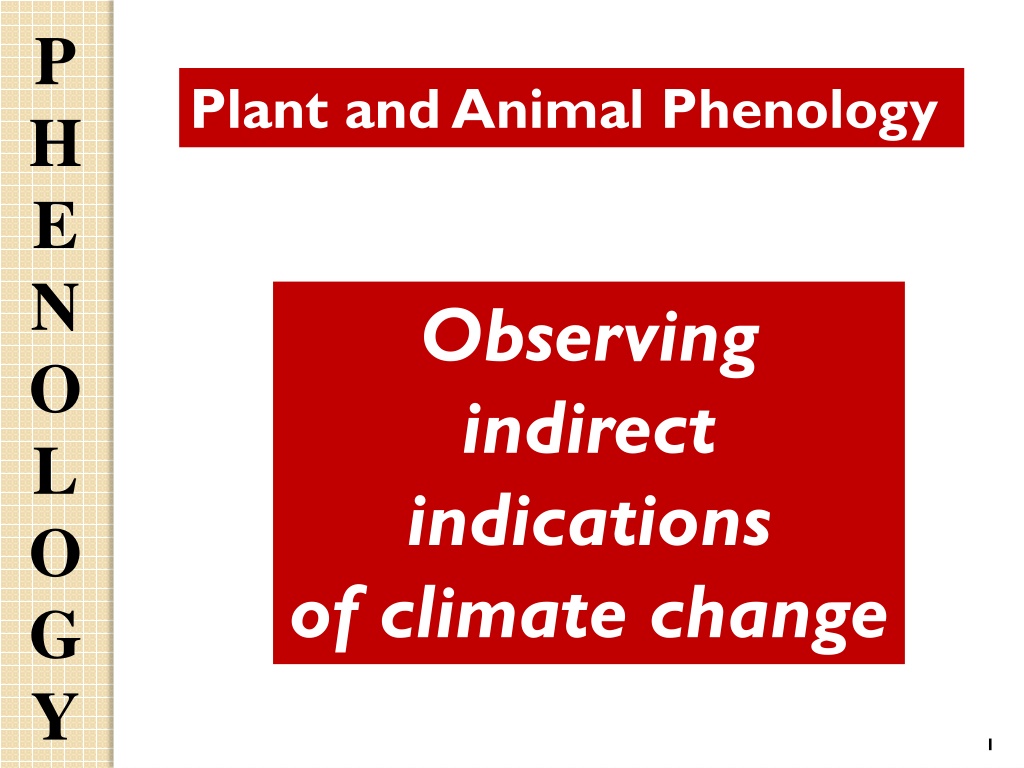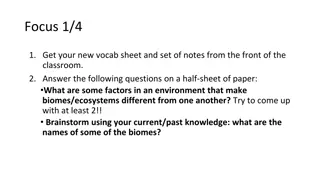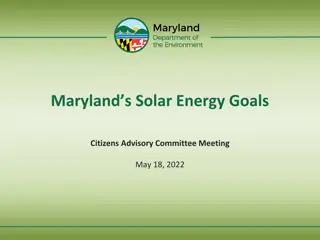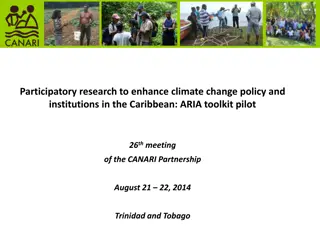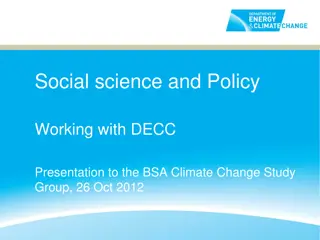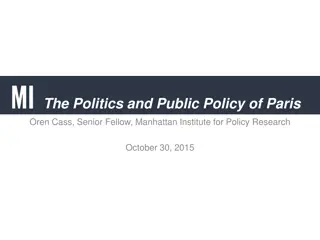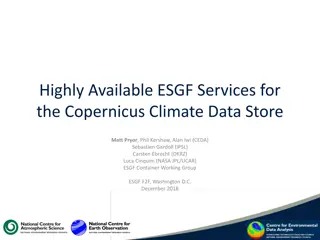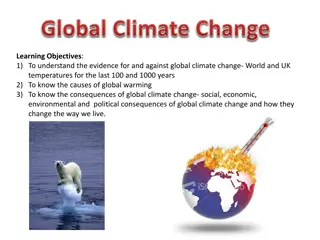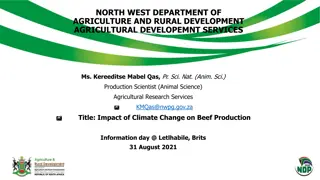Understanding Plant and Animal Phenology in Relation to Climate Change
Exploring the branch of ecology known as phenology, which studies the seasonal timing of life cycle events and the interactions between living organisms and their environment. Observing how various plant species' blooming patterns have shifted over time due to climate change, indicating earlier bloom times compared to the past.
Download Presentation

Please find below an Image/Link to download the presentation.
The content on the website is provided AS IS for your information and personal use only. It may not be sold, licensed, or shared on other websites without obtaining consent from the author. Download presentation by click this link. If you encounter any issues during the download, it is possible that the publisher has removed the file from their server.
E N D
Presentation Transcript
P H E N O L O G Y Plant and Animal Phenology Observing indirect indications of climate change 1
P H E N O L O G Y Part one: What is Phenology? Phenology is the branch of ecology that explores the seasonal timing of life cycle events. the study of the relationships between living organisms and their interactions with their natural or developed environment the series of changes of form and activity that a living organism undergoes from its beginning through its development to sexual maturity 2
P H E N O L O G Y Part one: What is Phenology? Story of Phenology http://climatewisconsin.org/story/phenology 3
P H E N O L O G Y Phenological Observations Plant Species Aldo s 1st Bloom 1935-1945 Julian Date (Aldo) Nina s 1st Bloom 1997-2007 Julian Date (Nina) Nina s date compared to Aldo s date Pasque flower Lupine Shooting star Spiderwort Black-eyed Susan Butterfly weed Bergamot Yellow coneflower Compass plant Prairie dock Big bluestem New England Aster Stiff goldenrod April 19 May 20 May 22 June 2 June 22 July 5 July 12 110 141 143 153 174 187 194 April 7 May 13 May 10 May 25 June 13 June 21 July 3 98 134 131 146 165 173 185 12 days earlier 7 E 12 E 7 E 9 E 14 E 9 E 14 E July 14 196 June 30 182 20 E 4 E 6 E July 15 July 19 July 30 197 201 212 June 25 July 15 July 24 177 197 206 August 21 234 August 27 240 6 L 18 E August 27 240 August 9 222 4
P H E N O L O G Y Phenological Observations 1. How many species did Nina see bloom earlier than Aldo did? 13 2. How many did Nina see bloom later? Only 1 3. Which flowers have changed their schedules the most? Compass plant, Stiff goldenrod, butterfly weed, yellow coneflower 5
P H E N O L O G Y Phenological Observations 4. Can you think of reasons why many flowers bloom earlier now than in the 1930s? The differences may be due to the warmer average temperatures that are now occurring, compared to 60 years ago. The exact dates that plants bloom will change from year to year, but overall, on average, flowers are blooming earlier. 6
P H E N O L O G Y Phenological Observations 5. Are there any exceptions to that generalization? Why might this happen? The New England Aster could be blooming later because this species has always bloomed in early fall. It may get its environmental clue by sensing the first cold days after a long series of warm days (and since the cooler temperatures of fall now come later, so does the onset of flowering for this species). 7
P H E N O L O G Y Agriculture and Economy What are some important crops in Michigan? Michigan is the second most agriculturally diverse state in the nation; Michigan ranks number one in production for tart cherries, pickling cucumbers, geraniums, petunias and squash, second for beans, carrots, celery and plums, and third for apples and asparagus. What might be the connections of climate change to plant life cycles? A change in planting and harvest time, altered growing season 8
P H E N O L O G Y Agriculture and Economy What might be the consequences of changing precipitation patterns? Less rain in the summer will affect ability of plants to grow and mature; this might also affect the health of insects and/or birds and other wildlife How might differences in the timing of weather events affect other aspects of the Michigan economy? A change in timing of weather conditions and plant or animal activity might have implications for hunting, fishing, and many other kinds of tourism which add up to a multi-million-dollar boost to the Michigan economy. 9
P H E N O L O G Y Plant Hardiness Zones Source: EPA Climate Change Indicators in the United States, 2010. http://www.epa.gov/climatechange/sc ience/indicators/ Animation from the National Arbor Day Foundation: http://www.arborday.org/media/mapchanges.cfm 10
C A S E Michigan Cherries andClimate Change S T U D Y Photo source: http://www.arborday.org/treeguide/TreeDetail.cfm?id=95 11
C A S E Michigan Cherries andClimate Change Questions for discussion: As phenological changes occur, such as earlier bloom dates, how might this affect plant/pollinator relationships? S T U D Y 12
C A S E Michigan Cherries andClimate Change Questions for discussion: For crops other than cherries, what could the implication be as pests that typically thrive in more southern climates are able to thrive further north, potentially in Michigan? S T U D Y 13
C A S E Michigan Cherries andClimate Change Questions for discussion: What are some innovative ideas that farmers could implement to combat the changes that are occurring or are projected to occur as a result of climate change? S T U D Y 14
C A S E Michigan Cherries andClimate Change Questions for thought: How do you think phenological data will help us further understand climate change in Michigan? S T U D Y 15
C A S E Michigan Cherries andClimate Change Questions for thought: What might be some ecosystem and species-survival challenges if some parts of an ecosystem change the timing of their biological events, but others do not? S T U D Y 16
